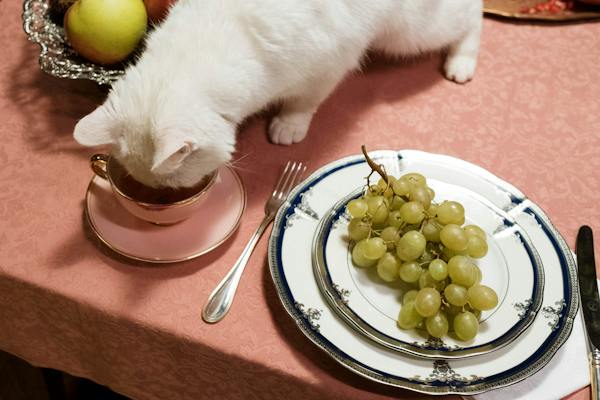In recent years, pet owners have become increasingly discerning about what they feed their beloved feline companions. The days of simply grabbing a bag of generic cat kibble off the shelf are waning, as more people seek options beyond the basics of cat nutrition. This shift has led to the rise of what is often referred to as beyond cat food – a category that encompasses a range of alternative diets and feeding practices designed to provide cats with optimal nutrition and health benefits.
Evolution of Cat Nutrition
Traditionally, cats have been fed diets consisting primarily of dry or wet commercial cat food. While these products have been formulated to meet the basic nutritional needs of cats, they may not always provide the ideal balance of nutrients for optimal health.
Traditional Cat Food
Traditional cat food typically contains a combination of protein, carbohydrates, fats, vitamins, and minerals. However, the quality and sourcing of these ingredients can vary widely among different brands and formulations.
Modern Cat Food Trends
In recent years, there has been a growing awareness of the importance of high-quality ingredients and species-appropriate nutrition for cats. This has led to the development of new cat food options that prioritize the use of whole, minimally processed ingredients and mimic the nutrient profile of a cat’s natural diet.
Understanding Cat Nutrition Needs
To provide optimal nutrition for cats, it’s essential to understand their unique dietary requirements.
Protein Requirements
Cats are obligate carnivores, which means they require a diet high in animal-derived protein to thrive. Protein is essential for supporting muscle mass, tissue repair, and overall health in cats.
Essential Nutrients
In addition to protein, cats require specific vitamins, minerals, and fatty acids in their diet to maintain optimal health. These nutrients play critical roles in everything from immune function to coat quality and skin health.
Beyond Traditional Cat Food Options
For cat owners looking to take their pet’s nutrition to the next level, there are several alternative feeding options to consider.
Raw Diets
Raw diets, which consist of uncooked meats, bones, and organs, aim to replicate the natural prey diet of wild cats. Proponents of raw feeding beyond cat food believe that it provides cats with superior nutrition and may offer benefits such as improved digestion and dental health.
Homemade Cat Food
Some cat owners prefer to prepare homemade diets for their pets, using fresh, whole ingredients. Homemade cat food allows for greater control over ingredient quality and can be tailored to meet individual cats’ nutritional needs.
Freeze-Dried and Dehydrated Options
Freeze-dried and dehydrated cat foods offer a convenient alternative to raw diets and homemade food. These products are made by removing moisture from fresh ingredients while preserving their nutritional integrity. They often contain a mix of meat, fruits, and vegetables and can be rehydrated with water before serving.
Benefits of Beyond Cat Food
Switching to a cat food diet can offer several potential benefits for cats.
Improved Digestion
Many cats experience digestive issues such as diarrhea, vomiting, or constipation when fed a diet of conventional cat food. Beyond cat food options, particularly raw diets and minimally processed foods, may be easier for cats to digest, leading to fewer digestive problems.
Better Coat and Skin Health
A diet rich in high-quality protein and essential fatty acids can help promote healthy skin and a shiny coat in cats. Beyond cat foods that prioritize these nutrients may lead to improvements in coat quality, reducing shedding and preventing skin issues.
Weight Management
Obesity is a common problem in domestic cats, often resulting from overfeeding and a lack of exercise. Beyond cat foods that focus on providing balanced nutrition in appropriate portions can help cats maintain a healthy weight and reduce the risk of obesity-related health problems.
Considerations Before Switching
Before making the switch to cat food, there are several important considerations for cat owners to keep in mind.
Consultation with Veterinarian
It’s essential to consult with a veterinarian before changing your cat’s diet, especially if they have any underlying health conditions or dietary restrictions. A vet can offer personalized recommendations based on your cat’s specific needs and health status.
Gradual Transition
Switching to a new cat should be done gradually to minimize the risk of digestive upset. Gradually mix increasing amounts of the new food with decreasing amounts of the old food over several days to allow your cat’s digestive system to adjust.
Monitoring Cat’s Response
Keep an eye on your cat’s health and behavior after transitioning to a diet. Look for signs of improved energy levels, coat beyond cat food quality, and overall well-being, but also be alert to any adverse reactions or digestive issues that may arise.
Popular Brands in Beyond Cat Food
Many brands are offering options, each with its unique formulations and benefits. Some popular brands to consider include [Brand 1], [Brand 2], and [Brand 3]. It’s essential to research and compare different brands to find the best option for your cat’s needs and preferences.
Conclusion
Beyond cat food represents a shift towards providing cats with nutrition that goes beyond the basics, offering a range of alternative feeding options designed to promote optimal health and well-being. By understanding your cat’s nutritional needs and exploring the various cat food options available, you can help ensure that your feline companion enjoys a diet that supports their overall health and vitality.


